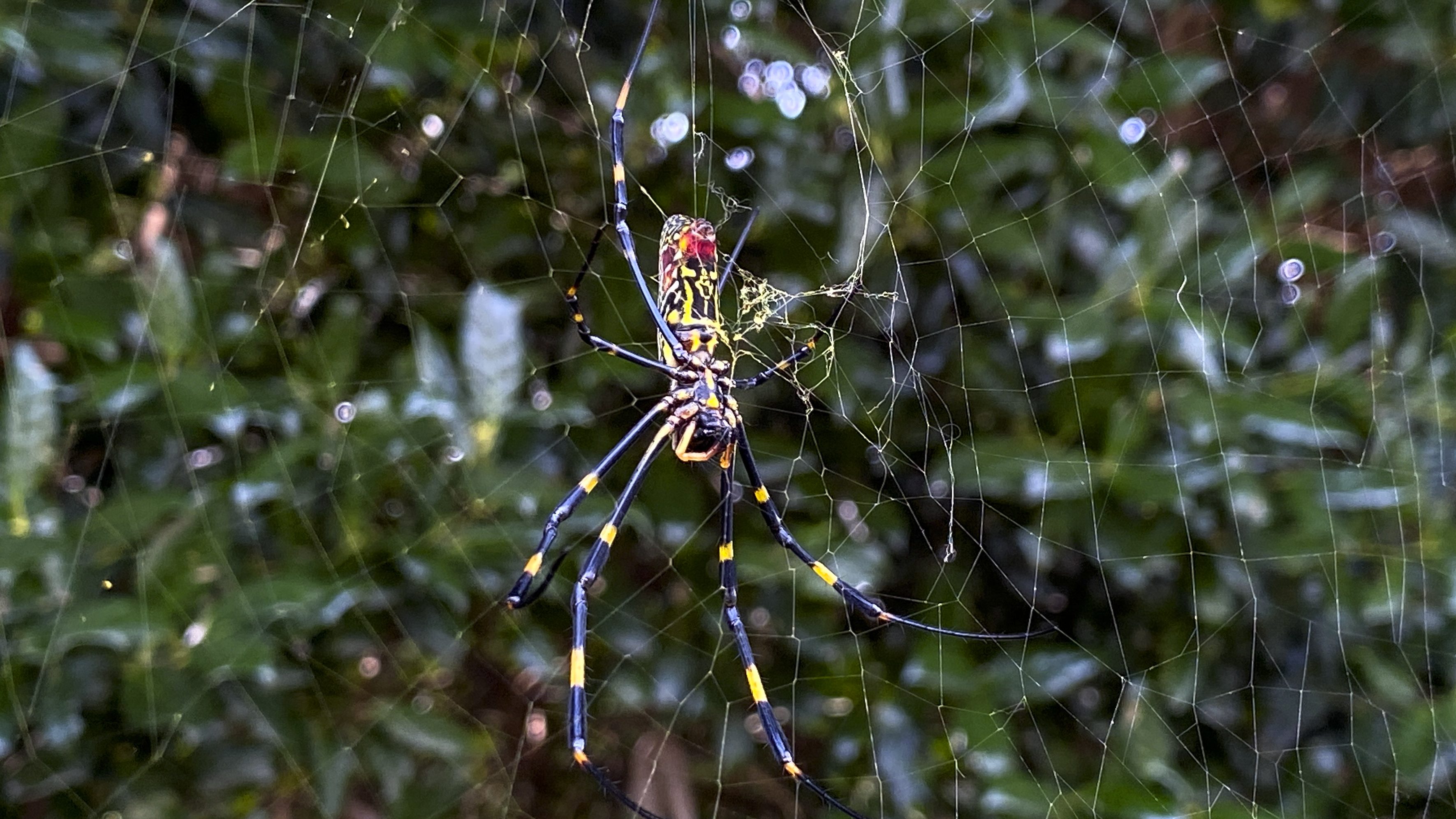Huge, colorful Joro spiders are making their way up the East Coast and will likely reach the D.C. area, bug experts say.
While Joro spiders are harmless to people and pets, their size and presence could trigger insectophobia, an excessive and intense fear of insects.
News4 spoke with Dr. Asha Patton-Smith, a child and adolescent psychiatrist with Kaiser Permanente, about how to calm yourself — and your children — if you spot the spiders.
How is insectophobia different than the average fear of bugs and spiders?
329 medal events. 32 sports. Endless drama. Catch all the action at the Paris Olympics. Sign up for our free Olympics Headlines newsletter.
"Insectophobia is not just not liking insects. It is an intense fear that is in many ways something that can't be explained and not something really that is understandable or based in reality. So people are deathly afraid of these things and it typically manifests in panic symptoms, sometimes almost paralysis, refusing to go into an area where they see the insect. Fear of seeing the insect prevents them from moving forward in daily activities. So it really is a big deal," Patton-Smith said.
How can families emotionally prepare for the arrival of Joro spiders?
"Please, everyone, educate yourself about what this spider looks like because it's striking. It's a bright color. It's sometimes as big as the female hand. So it is huge, and what you can do is be prepared if you see it," Patton-Smith said.
Female Joro spiders have gray-blue and yellow stripes on its abdomen and black legs with yellow bands. It's underside has distinct red markings. Male Joro spiders are brown and smaller.
Athough startling, Patton-Smith says to focus on the fact that they are harmelss. A study from the University of Georgia found the spiders are actually quite shy.
"You know that, apparently, they're very docile. They don't attack ... so they're not going to hurt you," Patton-Smith said.

"At the same time, how to overcome fear is to get information. So, learn about the spider, read about the spider, research about the spider and if that's not enough, especially for people that are dealing with intense fear, we usually treat it like we would any type of anxiety or panic symptoms. So relaxation techniques, deep breathing," she said.
"If that's not enough, it's time to talk to a mental health professional. There's a specific type of therapy that can be done, cognitive behavioral therapy, that reframes some of the intensive, fears and there's also exposure therapy, where you work with the therapist on slowly being exposed to whatever the insect is or the spider is, so that can slowly decrease the fear in a graduated way."
What other steps can you take to help children or others who fear spiders?
"Yeah, so the first thing is try to be as calm as possible in these situations. Now … it's sometimes very difficult. So if you're afraid in a situation or you're seeing some sort of insect that you don't like to say, 'Okay, this is really bothering me I'm going to take some deep breaths right now because this is really challenging.' That helps kids know that emotions are okay, showing emotions are fine and we can slowly recircuit our brain waves and recircuit our brain chemistry to make sure that we are handling the anxiety in a meaningful way. But education is key. Learning about whatever the threat is really does help."
The Joro Spider is native to East Asia and first arrived on U.S. soil years ago after hitching a ride on cargo ships. Experts say they can live from the Southeast all the way into northern Canada.



